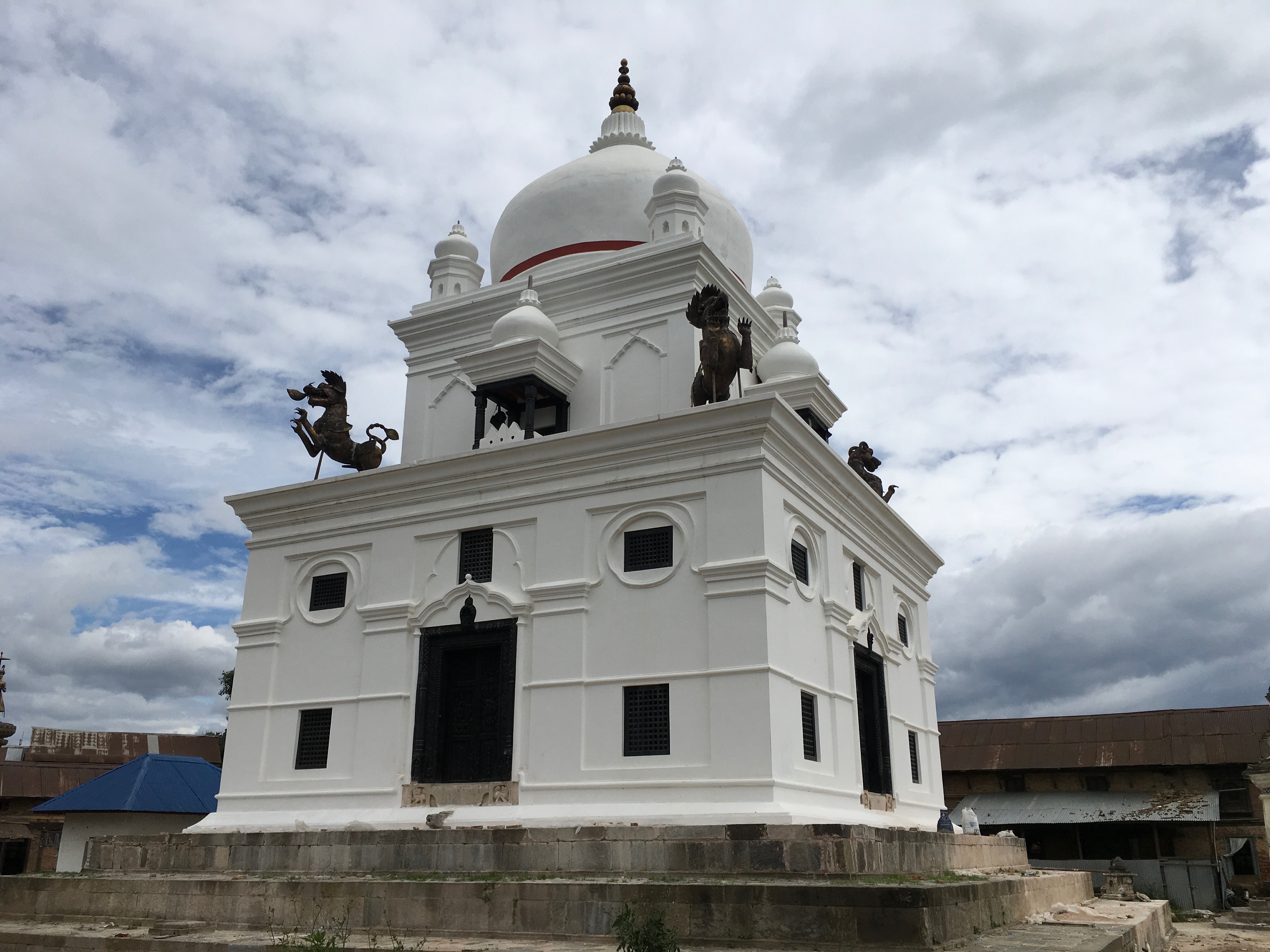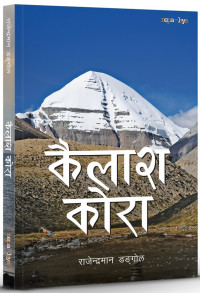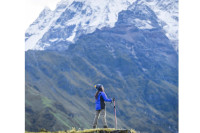Travel
Onto a silent life under the Thapathali bridge
The Bagmati promenade can be a potential heritage walk but at the risk of replacing its innocence.
Srizu Bajracharya
Thousands of people pass by the Thapathali bridge every day. Here the hustle of life grows abuzz during the day, with everyone in a hurry to reach somewhere. But below the bridge, beside the drying, desolated Bagmati, a quaint line of heritage hides in plain sight, behind the chaos of Kathmandu.
Under the Thapathali bridge, a woman sits outside the Udasi akhada, braiding her daughter's hair, while a sadhu clad in orange robe sits under a banyan tree. He seems much more relaxed than the others above the bridge, all rushing towards their workplaces to make their ends meet. While the playful Tripureshwor monkeys are swinging from branch to branch, their little ones are hanging joyfully in the tree. This is a familiar sight for the age-old Udasi akhada, which was built to be used as a free temporary lodging place for yogis from India.
But in recent years, they have been forced to be familiar with something else—the awful stench from Bagmati, from what is left of the revered river.
It is said where a river flows, a civilisation thrives, which means the Kathmandu that lives today owes everything to Bagmati's unrelenting current. However, nothing remains the same. The holy water, which is believed to purify people’s sin, has been slowly but gradually losing its mysticism—although many Nepalis still amount it to the divine. The romanticism of the river and the mystical banks, which Toni Hagen, a Swiss geologist, captured perfectly in the 1950s, has undoubtedly faded.
The steps from the bridge that should have led down to Bagmati now meets bushes. The bank of the river marked by the well-like circular cobbled stone structures, used for cremation and bathing purposes in the old days, is now shrouded by bushes, while Bagmati's basin is visible as it dries. On this land, clothes hang on wires, with slum squatters and new temples peppering the border. Some of the stone structures now bear the weights of the big black water tanks.
.JPG)
"We will never be able to put Bagmati back the way it was," says a man in his early 30s to his friend as he takes the heritage walk, themed 'Transformation of the City's History through the River' with 20 others on a Saturday. The walk was organised by StoryCycle and the British Council in collaboration with Kathmandu Metropolitan City and the locals of the place. It aspires to revive and restore the overlooked heritage through oral storytelling and mapping. The organising team herald the philosophy, "If we don't remember this place, there will be no one left to remind us."
And it is true that the Bagmati promenade is a forgotten remnant, perhaps because of the surrounding competitive humdrum of life. Few will come to this side of the river and spend time musing at the diverse heritage in this pathway facing the unhurriedly streaming Bagmati.
In Chess Park, to the left of where the bridge ends in Thapathali (if you’re walking from Kupondole), men are least bothered about the humdrum of ordinary life outside the park. To them, even the neighbouring disorder of the Bagmati promenade has become mundane. Stray dogs roll around enjoying the light breeze under the shadow of giant green trees; some men are deep in slumber.
Kshitiz Bhandari, who says he is an international chess player, is busy protecting his king in a game of chessboard with his usual club members. "This place has actually become better than what it used to be; it was in much worse condition," says Bhandari.
On the backyard of the Chess Park, four akhadas, rest house built by Jung Bahadur Rana for Hindu pilgrims who visited Nepal during Shivaratri, are in a dilapidated state. Somehow that makes its magnificence more reserved. In the four courtyards of Udasi akhada, Dasnami akhada, Nath akhada and Bairagi akhada, the mischievous monkeys of Tripureshwor play hide and seek. There are no people around, the akhadas are vacant.

But a little further, before the Kalmochan Ghat begins, the sages are curious when they see a Nepali group walking the less trodden path. One of them called out to the visitors saying, "While you are here, do some good by giving us some alms.” The group chuckles and passes by them.
"I am on a tirtha yatra; it's been seven days," says Kal Wala Baba, who is from Himachal Pradesh. "Previously, when we used to come, we used to rest in the akhadas, but they don't allow us to stay there anymore," he says. His neck is weighed down with beaded laurels and rudrakshas. For the passersby, his life is incomprehensible. "Jogi ko karma nai magne ho," one of them says, paying no attention to him. (As a sage, my karma is to ask for offerings.)
The next stop is a white monument, Jung Hiranaya Hem Narayan Temple, known as Kalmochan Mandir, which was completely destroyed during the earthquake of 2015; however, now it stands tall in its original architectural design. The place is still under construction but is in a much better condition than the other monuments on the same pathway.
The temple is named after Jung Bahadur Rana and his wives Hiranaya and Hem. While Narayan is the deity that resides in the temple, it is believed that the prime minister had constructed this place in penance of the lives he had taken during the Kot Massacre of 1846. Behind the temple, in the Kalmochan ghat near the Tukuchha river, many people who died in the massacre were brought to be cremated.
A little down the Tukuchhha river, also known as Ikshumati, filth reeks and fills the air. On its banks is a stone structure of Brahmanal, which acted as a deathbed for people in the old days while relatives took turns to offer them Bagmati’s holy water to drink.
The cobbled pathways lead to various other monuments and ghats: Tripureshwor Mahadev, Chandra Ghat, Purneshwor Mahadev, Puret Ghat, Hanuman Ghat, Teen Dewal, Pachali Ghat, Laxmishwor Madev, Radha Krishna Temple, some of which are still being reconstructed after the earthquake, and are more than a century old. They were built during the Rana regime, and each has its own story of becoming. Some were built as a token of love, while some were made by Rana rulers for recognition. However, they are seldom visited.
For many the back pathway of these temples may feel queer, because it's unnaturally quiet. When locals peer at visitors, they are sure to feel weary. But it's also because the locals here are not used to the attention of outsiders. For them, their home has always been overlooked and neglected. This is a place where for years the city’s dirt has accumulated.
For Hiralal Tandukar, this is not the first time he is taking a walk around the promenade. For him treading along the bank gives him a sense of satisfaction, but at the same time, it also breaks his heart, as he feels Bagmati is being encroached. "Looking at this place makes my heart heavy. Nobody will ever be able to make these monuments again, even if they want to. We must try to save what's left of it, but the more I come back to this place, the more it's changed. The pathways, the temples are all mismanaged," says Hiralal Tandukar, who has long advocated for the protection of the Bagmati river. But even after 30 years of his endeavour, nothing has changed. "We can't be indifferent anymore," he tells the group.
The Bagmati promenade has so much potential, to be a place to revisit ancient folklore. It's a place still untouched by consumerism—there are no colourful coffee shops, or fast-food restaurants around to distract visitors, nor any loud spiritual songs to imbue spiritualism. The walk is beautiful because of how the place embraces simplicity; there is no extra assertion to its elegance—everything is native. Tourism here is still innocent. One can come here just to enjoy the daylight that sifts through the green leaves, the chirping of the birds and the hum of bees. A place to enjoy the calm, to reconnect with the history of our country through its architecture.
At Teku Dovan, to the south-west of the Thapathali bridge, below the Kalo Pul bridge, where the two sacred rivers Bagmati and Bishnumati meet, the settlement is filled with more than 10 chaityas, as memorials made by the bereaved in the name of their loved ones.
A short walk from the Dovan leads to the temple of Pachali Bhairav. Here, there is one particular folk tale that locals usually recount to visitors, a story about the affair of Bhairav with Nai Ajima, a female god. The tale goes like this: Once when Bhairav was meeting his lover secretly, his son caught him in the act and in embarrassment, he ran off and hid underground. It is said he stayed there permanently, the place now is where the Pachali Bhairav Temple stands in Teku.
While life above the bridge is still abuzz, the pathway below is calm and naive, and the walk is both uplifting and heartbreaking. "This walkway is filled with history, and thus, people must know about these places. Every time I come here, there's always something new to explore," says Alok Tuladhar, who led the heritage walk. “Perhaps, a history even more worthwhile hides behind the tall houses here.”
***
What do you think?
Dear reader, we’d like to hear from you. We regularly publish letters to the editor on contemporary issues or direct responses to something the Post has recently published. Please send your letters to [email protected] with "Letter to the Editor" in the subject line. Please include your name, location, and a contact address so one of our editors can reach out to you.




 15.12°C Kathmandu
15.12°C Kathmandu










